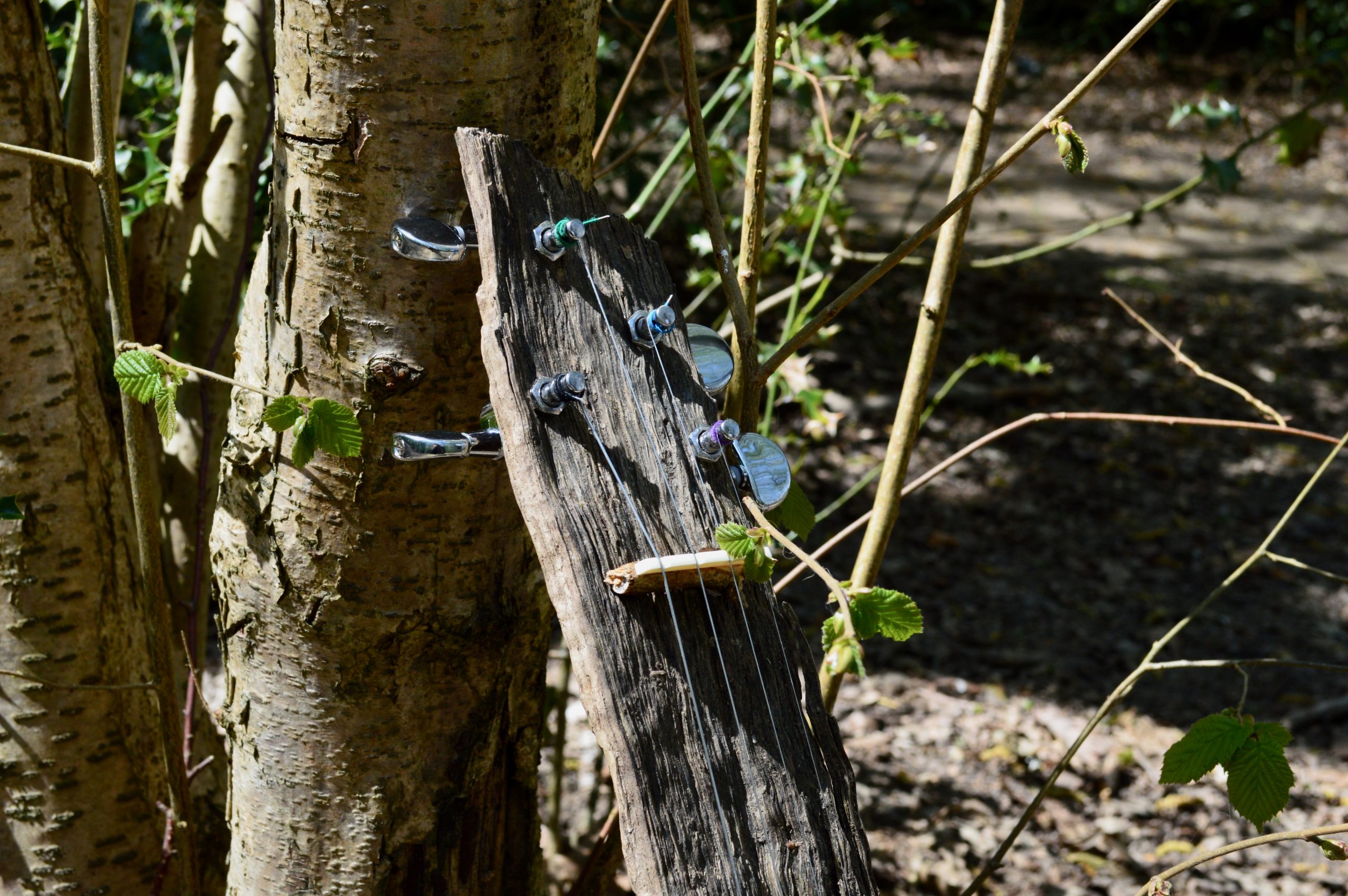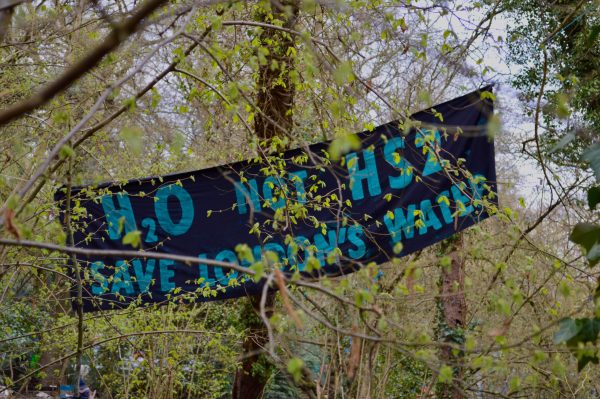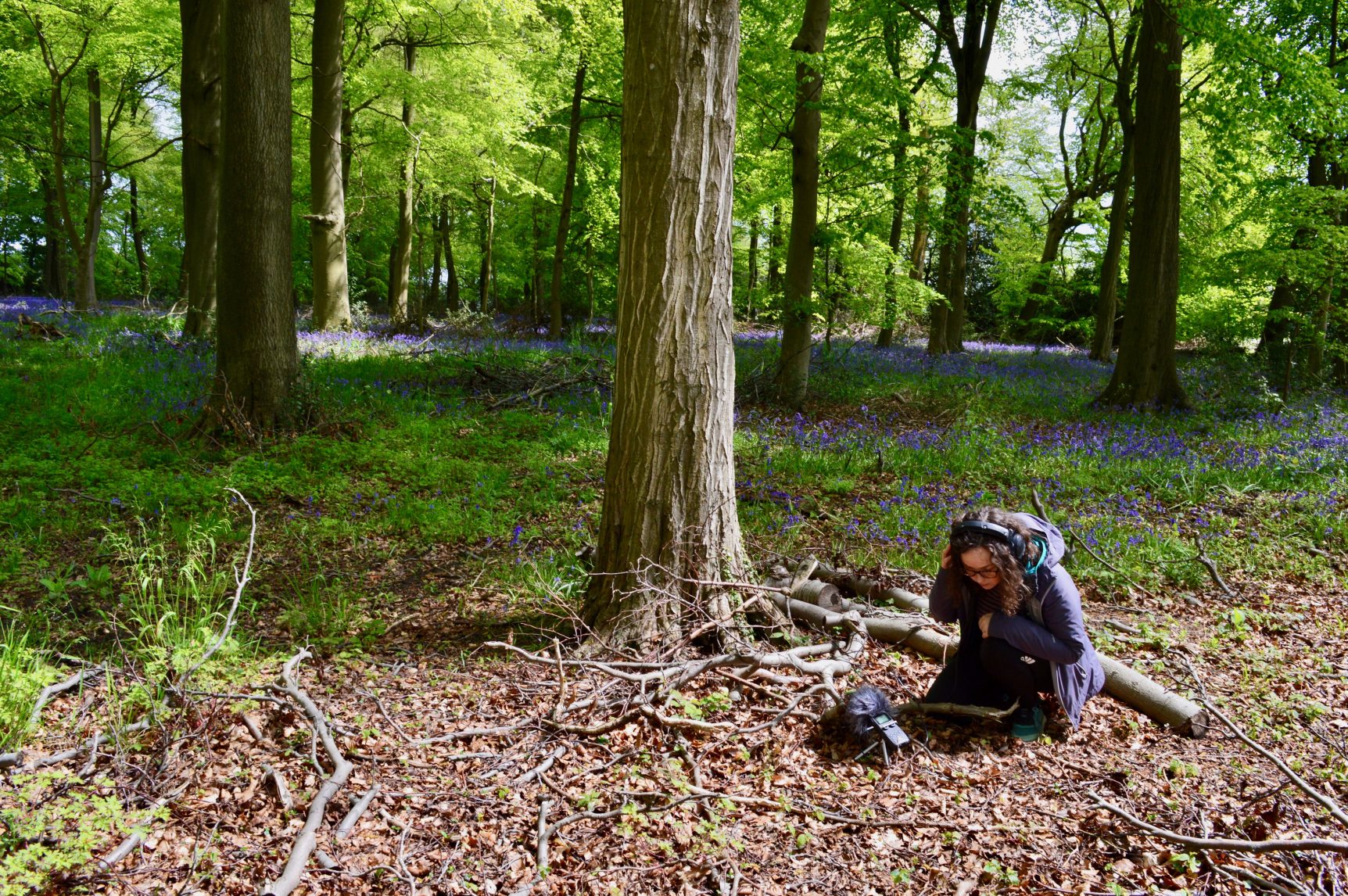Gwen Siôn is an experimental composer, pianist, producer and multidisciplinary artist. In early 2021, Gwen was selected as a grant winner as part of our Climate. Sound. Change. open call: a project supporting composers to create new works that respond to the climate emergency.
Her work ‘HS2 Ghostlands’ is a multidisciplinary arts and research project created in response to the climate emergency and HS2. It is a political act to record and preserve UK woodland, highlighting issues of deforestation, habitat destruction and biodiversity loss. The final outcome of the project includes a digital archive of audio recordings in the form of an interactive sound map, a set of musical instruments, hand-built by recycling natural materials found at the locations (such as fallen or felled tree branches), and a newly composed piece of experimental music.
This opportunity proved highly beneficial for Gwen, as it not only allowed her to develop a new area of her practise, but it also gained extensive recognition and lead to further publicity. The project was selected as winner of the LMVH Maison/0 ‘This Earth Award’ and was also nominated for a MullenLowe Group ‘Nova Award’ and Sustainability First Art Prize.
We chatted with Gwen to hear how the commission impacted her professional development and artistic practise.
What inspired you to write about climate change?
Environmental and ecological concerns are a fundamental part of my practice and are often explored explicitly and implicitly in my work.
For this project I was inspired by seeing the environmental impact of HS2 first-hand on woodlands near my home. Many ancient woodlands and diverse thriving wildlife habitats nearby were being gradually destroyed. I also became aware of the way that HS2 was being managed. I witnessed illegal felling practices with no ecologist on site, in locations that were supposed to be protected by environmental law as they were home to extremely rare wildlife species.
Seeing what was going on I wanted to raise awareness and to create a work that could preserve a record of these spaces before it was too late.
I aimed to capture a moment in time by exploring these endangered woodlands, through acts of translation, mapping, musical composition, field recording and photographic documentation, to highlight deforestation, habitat destruction and biodiversity loss.
The project is the result of working for 5 months on location at 18 sites across Hertfordshire, Buckinghamshire and the outskirts of London, and collecting field recordings and researching extensively into HS2 and its environmental impact. I wanted to raise awareness and create a resource as an immortalised digital space, that could exist beyond the loss of physical locations. This would facilitate a continuing point of contact between the public and these environments.
How has this grant enabled you to develop professionally?
The grant has greatly contributed to my professional development, enabling me to purchase new items of professional field recording equipment, which elevated my project and the quality of the recordings I was able to capture. This has helped expand my technical knowledge and skills, driving my professional development forward in a very practical way.
Both the grant and opportunity offered by Sound and Music have also enabled me to access new creative networks and introduce my work to new audiences.

[‘HS2 Ghostlands’: the digital archive and interactive sound map]
Did the project allow you to develop new practises, ideas or concepts that you wouldn’t have explored otherwise?
As the project took place during the pandemic it was essential for me to develop new ways of working and a different approach to my practice.
I had to shield in lockdown which had a huge knock-on effect on my practice. I didn’t have access to studios, materials, workshops, external support from technicians or specialist equipment. I had to be completely self-sufficient and do things in a very DIY, solitary way. This meant working either outside or alone, with found materials, and learning new crafts and skills to execute my project professionally. I had to adapt my way of thinking and working, embrace the challenges and be very resourceful.
The challenges presented by the pandemic ended up becoming a part of the work and the project itself was, in a way, born out of the pandemic.
Essential to the project was utilising the tools I had to hand, recycling natural materials and environmental sounds, and using the landscape around me. This was my only contact with the outside world! I also had to think about presentation, in terms of making work accessible in a digital space rather than a physical one.
Despite the challenges, this meant that I have engaged with the natural environment around me in a much deeper and more mindful way.
I’m strangely grateful because the project would not have happened in the way that it did had things been different. The work became a process of responding to the current situation around me.
Tell us about any connections or networks that you made throughout the project. Will they continue to shape your work?
I made many connections remotely with other anti-HS2 protesters and individuals working in ecology and sustainability. They have formed part of an important network, not only for this project but also for further environmental research which is ongoing within my practice.
I have also developed many creative networks within the arts. This project went on to be selected as winner of the LMVH Maison/0 ‘This Earth Award 2021’ (an environmental arts award championing work that advocates for nature). The work was also shortlisted for the MullenLowe ‘NOVA Awards 2021’
These connections have expanded my creative networks, forming the potential for further opportunities and future collaborations.

Do you feel that after winning the this open call, your work has reached a wider audience, or helped you to raise your profile as an artist?
Winning the ‘Climate. Sound. Change open call has allowed my work to reach a much wider audience.
Having my work shared with both Sound and Music and the British Music Collection’s respective networks has raised my profile as a professional artist.
It has enabled my work to reach new and diverse audiences on a much larger scale which has been a really exciting experience, and one for which I am extremely grateful.
To find out more about Gwen’s work, visit her website.
Gwen’s story shows how fruitful our artist development opportunities can prove for composers looking to explore a new direction in their work. But as a charity, we need your help to continue enabling more composers across the UK to realise their potential and create exciting, ambitious new work.
If you feel passionate about the future of new music, then please consider supporting us today. Your kind contributions will provide more opportunities for composers like Gwen.


